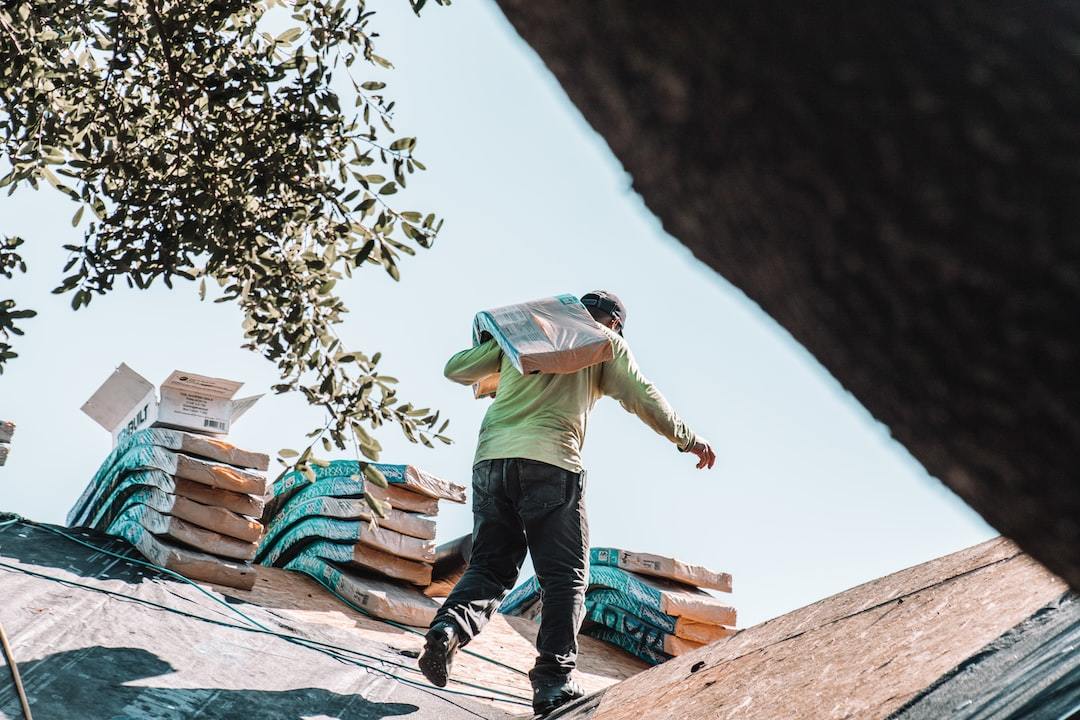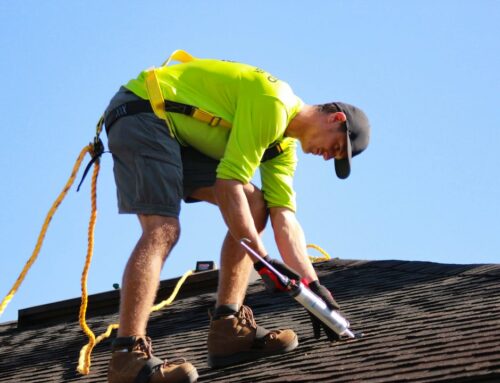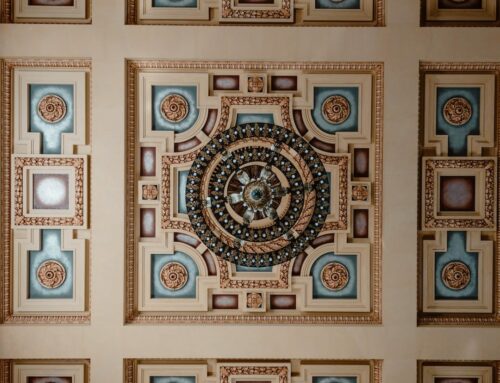Understanding “what is a roofing square” is crucial when planning for roof replacement or installation. A roofing square, typically used in the roofing industry, refers to an area of 100 square feet. This unit of measurement plays a significant role in determining the amount of materials required and estimating costs.
In this post, we’ll delve into how ‘roofing squares’ are utilized to calculate material requirements and why understanding what constitutes a ‘square’ is important. We will also guide you through the steps involved in determining the number of squares needed for your project and discuss how factors like slope complexity can impact these calculations.
Furthermore, we’ll explain how to shingle count per bundle relates to roofing squares and help you understand how many underlayment rolls might be needed based on calculated squares. The usefulness of speed square tools in measuring pitch accurately will also be highlighted.
Finally, Pyramid Roofing’s expertise comes into play while handling complexities related to roofs – from deciding between premium vs regular products to considering potential wastage from excess purchases. By understanding “what is a roofing square”, homeowners can make more informed decisions about their roof size and material needs.
Table of Contents:
- Understanding the Concept of a Roofing Square
- Calculating Roof Squares for Your Project
- How Shingle Count and Underlayment Rolls Relate to Roof Squares
- Why You Need a Speed Square for Accurate Roof Measurements
- Pyramid Roofing’s Expertise in Handling Complex Roofs
- FAQs in Relation to What Is a Roofing Square
- Conclusion
Understanding the Concept of a Roofing Square
A roofing square, often simply referred to as a “square,” is a unit of measurement used in the construction and roofing industry to quantify the area of a roof. It is used to estimate the amount of roofing material required for a project. One roofing square is equal to 100 square feet (or about 9.29 square meters).
When calculating the roofing materials needed for a project, contractors and roofers use the concept of squares to make calculations more manageable.
Role of a ‘Roofing Square’ in Calculating Material Requirements
Basically, if you have a 2000 sq ft house that needs new shingles, you’ll need around 20 squares of shingles. But remember, factors like waste and complexity can mess with those numbers.
Importance Of Understanding What Constitutes A ‘Square’
If you’re planning a roofing project, knowing what a ‘square’ is will save you from awkward conversations with your contractor. It’s all about transparency, baby. Furthermore, being aware of this concept can help you make decisions with confidence and stay away from any confusion. No one likes surprises when it comes to roofs.
“Understanding the concept of a roofing square is crucial for calculating material requirements and avoiding misunderstandings. #Roofing101 #TransparencyIsKey” Click to Tweet
Calculating Roof Squares for Your Project
If you’re planning a roofing project, knowing how to calculate roof squares is a must. It helps estimate material needs and budget accurately.
Steps to Determine the Number of Squares Required
Measure your home’s length and width, multiply them, and voila. You have the total square footage. For example, a 30×40 house is 1,200 square feet.
To convert this to roofing squares, divide the total area by 100. In our example, that’s:
This means you’d need around twelve roofing squares based on the footprint alone.
Impact of Slope Complexity on Calculations
Remember, roofs aren’t flat. Slopes increase surface area, affecting material and labor costs. Calculating roof pitch is crucial for accurate estimates.
- A low-pitched roof needs slightly more materials than the base dimensions because it’s almost flat.
- A medium-pitched roof requires about twenty percent more materials due to increased surface area.
- A steeply pitched roof demands up to fifty percent extra resources due to larger coverage areas.
Elements like chimneys, skylights, and dormers add complexity, requiring additional measurements. Professional expertise ensures precise estimates, avoiding unexpected cost overruns. While homeowners can make preliminary assessments, consulting professionals like Pyramid Roofing ensures thoroughness and eliminates errors.
How Shingle Count and Underlayment Rolls Relate to Roof Squares
The concept of a ‘roofing square’ goes beyond just being 100 sq ft. It also involves shingle count per bundle and the number of underlayment rolls needed, which affect cost calculations – from materials to labor charges.
Relation between Shingle Count Per Bundle and Roofing Squares
Typically, one roofing square requires three bundles of shingles. Each bundle usually has around 29 asphalt shingles. So, for a ten-square roof (1,000 sq ft), you’d need about thirty bundles of shingles. Keep in mind that this can vary based on the type and brand of shingles, as some fancy ones may have fewer pieces per bundle.
Number Of Underlayment Rolls Needed to be Based On Calculated Squares
Calculating the number of roofing squares is important, but so is determining the required underlayment rolls. A standard roll covers about four squares or 400 sq ft when laid flat without overlaps. Therefore, for every four roofing squares, you’d need one roll, assuming no wastage due to cutting or fitting around vents or chimneys.
This calculation helps homeowners estimate material costs and installation time, as underlayment plays a significant role in installing new roofs.
A Note About Waste Factor:
- Cutting waste: When estimating materials, remember that some amount is lost due to trimming edges at valleys, ridges, and eaves – usually around five percent extra over the total area covered.
- Pitch factor: Steeper roofs require more material than flatter ones due to their increased surface area, even if the horizontal measurement is the same. Thus, higher pitch factors result in needing additional materials, despite the base footprint remaining unchanged.
Note: For accurate and quality service in Kansas City, consult professionals who have extensive experience dealing with these complexities.
Key Takeaway:
Understanding the concept of a ‘roofing square’ is crucial for calculating costs in roofing projects. One roofing square typically requires three bundles of shingles and one roll of underlayment, but factors like shingle count per bundle and waste factor should also be considered. Consulting professionals with experience in dealing with these complexities can ensure accurate estimates and quality service.
Why You Need a Speed Square for Accurate Roof Measurements
Roofing requires precision, and the speed square is the ultimate tool for achieving accuracy. This little gadget can revolutionize your roof measuring game, making it a must-have for any project.
Marking Wide Boards and Checking Squaring Accuracy
A speed square, also known as a triangle square or rafter angle square, is a carpenter’s and roofer’s best friend. It’s perfect for marking cuts on rafters and determining roof pitch with ease and precision.
The beauty of the speed square lies in its simplicity. Just align it with the edge of your board and use its built-in scales to mark your measurements accurately. It’s all about getting those cuts just right, minimizing waste, and maximizing efficiency.
Benefits of Using a Speed Square
Speed squares offer more than just accurate measurements:
- Precision: The right tools make all the difference, especially when it comes to measuring roof pitches accurately.
- Versatility: Whether it’s a hip roof, gable roof, or shed roof, a speed square can handle them all, no matter the pitch.
- User-friendly: You don’t need to be a DIY pro to use a speed square. They come with clear instructions, making them accessible to anyone.
Using a speed square ensures fair comparisons between quotes from different companies, eliminating discrepancies caused by miscalculations or misunderstandings. It can be cost-effective and reduce stress over time.
Pyramid Roofing’s Expertise in Handling Complex Roofs
Not everyone has access to or wants to deal with tools like speed squares. That’s where professional services like Pyramid Roofing come in. We specialize in handling the complexities of roofs, serving homeowners in Kansas City with top-notch service and customer satisfaction as our top priorities.
Key Takeaway:
A speed square is a crucial tool for accurate roof measurements, as it allows for precise marking and checking of cuts on rafters. It offers benefits such as precision, versatility, and user-friendliness, making it essential for roofing projects. Professional services like Pyramid Roofing can handle complex roofs with expertise, ensuring customer satisfaction in Kansas City.
Pyramid Roofing’s Expertise in Handling Roof Complexities
Though roofing may not require expertise, one can save themselves from an unfortunate incident with some knowledge of the subject – Pyramid Roofing is here to help. But knowing a thing or two can save you from a leaky disaster. That’s where Pyramid Roofing comes in handy.
Pyramid Roofing: Masters of Roof Complexity
The folks at Pyramid Roofing are pros at dealing with all kinds of roofs. They know that each roof is unique, with its own quirks and needs. They’re experts at calculating roofing squares, considering factors like slope and pitch. No guesswork here.
By being precise, Pyramid Roofing saves you from wasting materials.
FAQs in Relation to What Is a Roofing Square
What is a roofing square?
A roofing square is a fancy way of saying 100 square feet of roof goodness.
What’s the difference between a roofing square and square feet?
Roofing squares and square feet are like cousins, but one square is equal to 100 square feet.
How much area does a roofing square cover?
One roofing square is enough to cover a 10×10 ft area or 100 sq. ft of roof space.
What’s a ‘square’ when it comes to roof size?
When we talk about roof size, a ‘square’ is just a fancy word for 100 sq. ft of roof.
Conclusion
And there you have it, a comprehensive guide to understanding what a roofing square is. We’ve covered the basics, from its definition to its importance in the roofing industry. Remember, a roofing square is not just a simple measurement; it’s a crucial unit that professionals rely on to estimate materials, calculate costs, and complete roofing projects efficiently.
By now, you should have a clear understanding of how to calculate a roofing square and convert it into more familiar measurements like square feet. Whether you’re a homeowner planning a roofing project or someone interested in the construction field, this knowledge will undoubtedly come in handy.
Knowing the intricacies of a roofing square empowers you to make informed decisions and communicate effectively with roofing contractors. You can now confidently discuss your roofing needs, request accurate estimates, and ensure that your project proceeds smoothly from start to finish.
We hope this blog has been insightful and valuable in expanding your knowledge about roofing squares. Remember, when it comes to roofing, attention to detail and accurate measurements are essential for achieving a sturdy and long-lasting roof. So, armed with this newfound knowledge, go forth and make informed decisions about your roofing endeavors.
Thank you for joining us on this journey to unravel the mystery behind a roofing square. As always, feel free to explore our other blogs for more exciting and informative content. Until next time, happy roofing!







